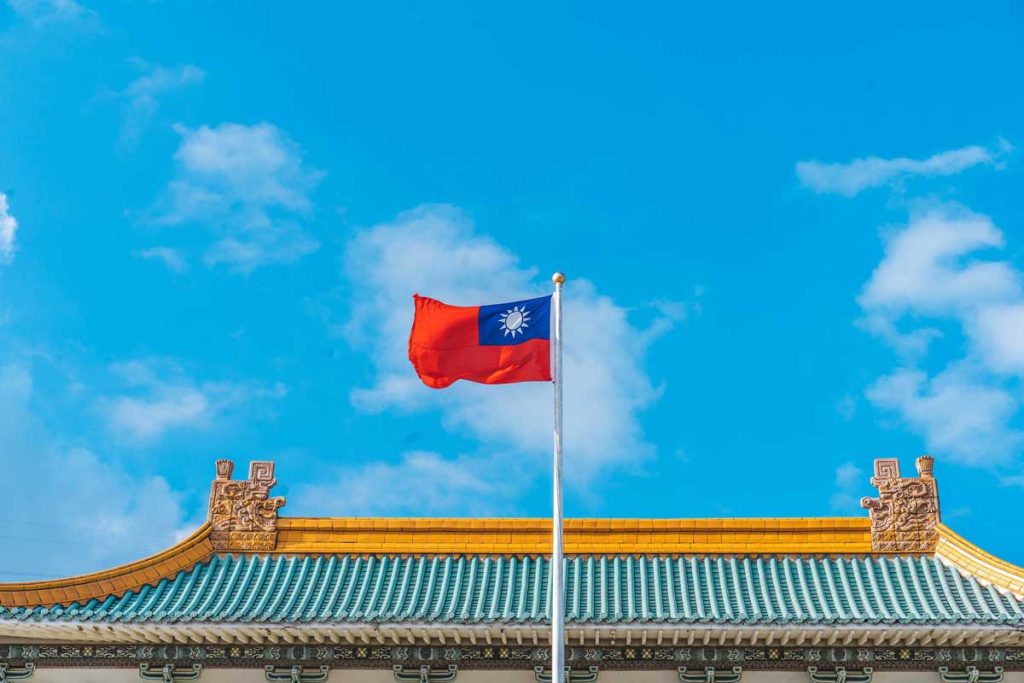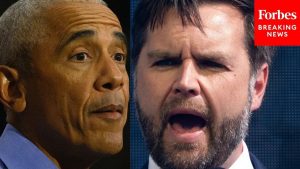Recently, Taiwan has received three signals from the United States. First, the U.S. has abandoned Ukraine. Second, it has demanded that TSMC expand its investments in the U.S. and rescue Intel. Third, the U.S. State Department revised its “U.S.-Taiwan Relations” webpage, once again removing the phrase “does not support Taiwan independence.”
Of these three signals, only one—about TSMC—represents a direct message from President Trump to Taiwan. However, the other two are also relevant to Taiwan’s situation. The messages conveyed by these signals seem to contradict each other, leaving Taipei confused and uneasy.
For years, Taiwan’s ruling party and its supporters—accounting for about 40% of eligible voters—have clung to two core beliefs. First, they saw America’s staunch support for Ukraine against Russian aggression as a blueprint for how the U.S. would respond to a potential Chinese invasion of Taiwan. The cooperation of Atlantic allies to isolate Russia inspired optimism in Taiwan, offering a model for isolating China in the future. If Ukraine, backed by Western unity, could repel Russia and reclaim lost territory, it would signal that the West would ensure Taiwan’s full independence.
Second, the ruling party portrays TSMC and the semiconductor supply chain as a “silicon shield”—an” indispensable pillar of the global economy and technology capable of deterring China’s ambitions to undermine global interests through invasion.
However, within 30 days of Trump’s inauguration, both of these psychological defenses collapsed.
Trump has signaled his intent to shed the financial burden of supporting Ukraine and rebuild ties with Russia, completely dismantling the democratic narrative championed by the Biden administration over the past three years. Yet, over the past four years, Taiwan has positioned itself as a member of the “U.S.-led democratic front”, using this identity to convince domestic voters that democratic values alone could shield them from China.
This explains why former President Tsai Ing-wen, before leaving office, was so fixated on whether the U.S. would continue supporting Ukraine. Last year, signs of wavering commitment had already emerged in Washington. Even after Trump’s election, Taipei still hopes that the United States will not abandon Ukraine, because to do so would be tantamount to abandoning a democratic alliance and a commitment based on values.
Global affairs, however, have always obeyed realism, not democratic prayers. No miracle occurred. Taiwan’s ruling party, like Europe, was left stunned and incredulous by the Trump administration’s complete reversal of Ukraine policy. According to Reuters, Washington even opposed including language condemning Russia in a joint G7 statement expected at the end of February.
The Economist also began to question, “Will it be Ukraine today, Taiwan tomorrow? , accusing Trump of planting a ticking time bomb in the Indo-Pacific region, leaving everyone on edge, and Taiwan fears becoming an abandoned pawn in the US-China game.
In truth, what happened to Ukraine is only symbolic for Taiwan and will at best bring some embarrassment to the ruling party. But what happened to TSMC is substantial. According to the Trump administration’s approach, Taiwan will not only lose its “silicon shield,” but the overall economy will also suffer unprecedented damage.
Trump threatened to impose 100% tariffs to require Taiwan semiconductors to set up factories in the U.S., with reports suggesting TSMC is also tasked with bailing out Intel.
TSMC’s advanced-process chips hold a near-monopoly, giving it pricing power. If tariffs are imposed, the primary losers would be American customers. North America accounts for 60%-70% of TSMC’s total revenue, with nearly all chips for that market coming from Taiwan or third countries assembling them into consumer products—like iPhones exported from China, Vietnam, or India to the U.S.
Notably, TSMC’s Arizona plant, set to begin producing 4-nanometer chips in Q1 2025, will have two factories with a combined annual output of 600,000 12-inch wafers. TSMC’s total annual production, however, is 16 million wafers. In other words, achieving Trump’s goal of reviving U.S. chipmaking remains a distant dream.
It’s understandable why the Trump administration is pushing TSMC to expand U.S. investments and even rescue Intel’s chip manufacturing arm—chips are critical, and the current state of the U.S. supply chain is deemed unacceptable.
TSMC isn’t particularly afraid of tariffs but is deeply reluctant to save Intel, as this would mean transferring key technologies and possibly even clients—essentially signing away its autonomy. This prospect terrifies not just Taiwan’s semiconductor industry but also Taipei’s stock market investors and the government.
TSMC accounts for 35%-40% of the Taipei Stock Exchange’s market value, while the broader semiconductor sector comprises 40%-45%. Beyond TSMC itself, its U.S. investments would pull thousands of supply chain companies and substantial capital out of Taiwan. The Trump administration’s current approach effectively amounts to an economic death sentence for Taiwan.
Taiwan’s ruling party is at a loss as to how to deal with this situation. President Lai Ching-te can only recycle the Biden-era “democratic alliance” narrative to placate voters, but Trump’s disdain for such alliances is well-known.
Amid Taiwan’s growing frustration, the U.S. State Department again revised its “U.S.-Taiwan Relations” page, removing the “does not support Taiwan independence” statement. This threw Taipei’s political circles into confusion. The ruling party seized on it with excitement, claiming it signaled an improvement in U.S.-Taiwan ties, while the opposition remained cautious, suspecting the message might be aimed at Beijing, not Taipei.
Based on the experiences of Ukraine and TSMC, a reasonable conclusion is that the Trump administration’s stance toward America’s friends hinges on “price” (hard cash) rather than “value” (ideology).
Driven by security concerns, Taiwan’s ruling party prefers to believe Washington’s posture against Beijing remains unchanged. This isn’t entirely wrong, but expecting America’s anti-China stance to equate to defending Taiwan is clearly detached from reality. If, in Trump’s eyes, Taiwan’s primary worth lies in its semiconductor supply chain, he is cashing in that value preemptively, much to Beijing’s delight. In the future, Taiwan may find it difficult to establish its economic and strategic importance on the global stage.
The situation is evolving dramatically. Over the next four years, Taipei will likely continue receiving conflicting signals from the U.S. and be overwhelmed by confusion and fear, Ice and Fire.








